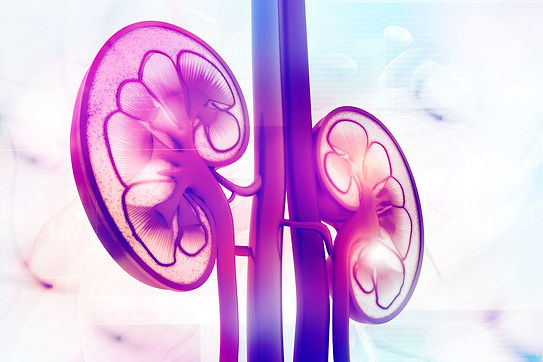
Patient Information about Hyponatremia and SIADH

Hyponatremia signs and symptoms
Hyponatremia which is a low blood sodium level, is a relatively common condition. Hyponatremia is the most common electrolyte disturbance people experience. Usually, Hyponatremia is due to the inability of the body to excrete excess water. This excess water accumulates in the blood, dilutes the sodium level, and leads to low blood sodium levels. The effects of Hyponatremia and low blood sodium levels include:
-
Drowsiness
-
Headaches
-
Falls
-
Disturbances in bone health/Osteoporosis
-
Slowness of thought & reaction time
-
Difficulty walking normally
-
Seizures
-
Brain swelling
-
And even death

The Diagnosis of Hyponatremia and SIADH
The only way to properly diagnose Hyponatremia is with a blood test. Your doctor may also test your urine, specifically urine electrolytes and osmolarity (concentration). These tests together with a thorough history, medication review and physical examination will help your doctor determine the cause of the water imbalance.

The Causes Hyponatremia
There are many possible causes of Hyponatremia. One way to explain it is to consider how humans lived long ago. Before the modern age of easily accessible clean water, our body was programmed to hold water tightly, to avoid dehydration.
In the modern age when water is accessible, our ancestry sometimes kicks in when we are under unusual physical stressors and the body may signal to retain water unnecessarily.
These stressors include:
-
Lung diseases (COPD, cancer, infection)
-
Brain diseases (cancer, strokes, scarring, infections)
-
Pain
-
Nausea (especially after surgery)
Other potential Hyponatremia causes include thyroid disturbances, medications especially thiazide diuretics, anti-depressive medications and anti-seizure medications, poor diet, as well as adrenal insufficiency.
This said, Hyponatremia often has an unknown cause called an Idiopathic cause.
The hormone that is secreted from your pituitary gland that may be causing hyponatremia is called Anti-Diuretic Hormone (ADH). ADH does just what its name implies; it is anti-diuresis or slows urine output. The urine turns dark and concentrated, and water excretion is dramatically reduced.

How hyponatremia is treated
Proper treatment means proper diagnosis. Your doctor must be sure there aren’t other reasons for the dilution effect mentioned above. Examples of improper dilution include heart failure and liver disease. Both can cause fluid retention due to different mechanisms. These diseases are often treated with a low sodium diet and diuretics. Hyponatremia may also be caused by excessive water intake relative to solid food intake. This is termed primary polydipsia hyponatremia and may also be referred to as a Tea and Toast diet by your Doctor. These diseases are treated with simple fluid restriction and an increase in food intake.
Let’s think back to the causes of Hyponatremia. Now that we have talked about the other processes, the term SIADH always gets brought up. This is a syndrome of inappropriate antidiuretic hormone release. A bit confusing, but if you follow the name, it is an improper release of the hormone that does not allow the kidney to release water. This is what occurs in those examples, as mentioned earlier, the lung disease, brain disease, pain, or nausea scenarios.
SIADH will therefore cause the kidney to hold water inside and not release it, diluting the sodium level in the blood that leads to some of the symptoms of hyponatremia.
To treat this SIADH process, we must start with a fluid restriction as a part of a Hyponatremia diet. Your doctor will advise you on what amount of fluid to drink per day. This does include all liquids and not just water. Often that is not enough, and the you may require therapeutic intervention. Prior to ure-Na being available Doctors may have used diuretics and salt tablets for Hyponatremia.
Ure-Na and urapple work by osmosis. They draw excess water out through the kidney naturally , removing excess water without the need for salt tablets or extreme fluid restrictions. Ure-Na and urapple are medical foods and are allowed to be purchased directly by you without a prescription. Medical foods like ure-Na should be taken only under the supervision of a medical practitioner. The clinical trials with ure-Na have shown that only 2% of patients taking ure-Na experience side effects. The most common side effect reported is dysgeusia.
Dysgeusia is typically defined as a metallic taste sensation that persists after ure-Na is taken..
Hyponatremia or low sodium is a common disorder that may cause multiple vague symptoms or stark noticeable debilitating symptoms. A thorough investigation is necessary to tease out the reason for the water imbalance in your body. There are several ways to treat Hyponatremia. With the example of SIADH, fluid restriction, ure-Na or salt plus water pills may all be options to help rid the body of excess water and get the sodium level back into the normal range. Thus alleviating the symptoms of low sodium and getting back to feeling normal.